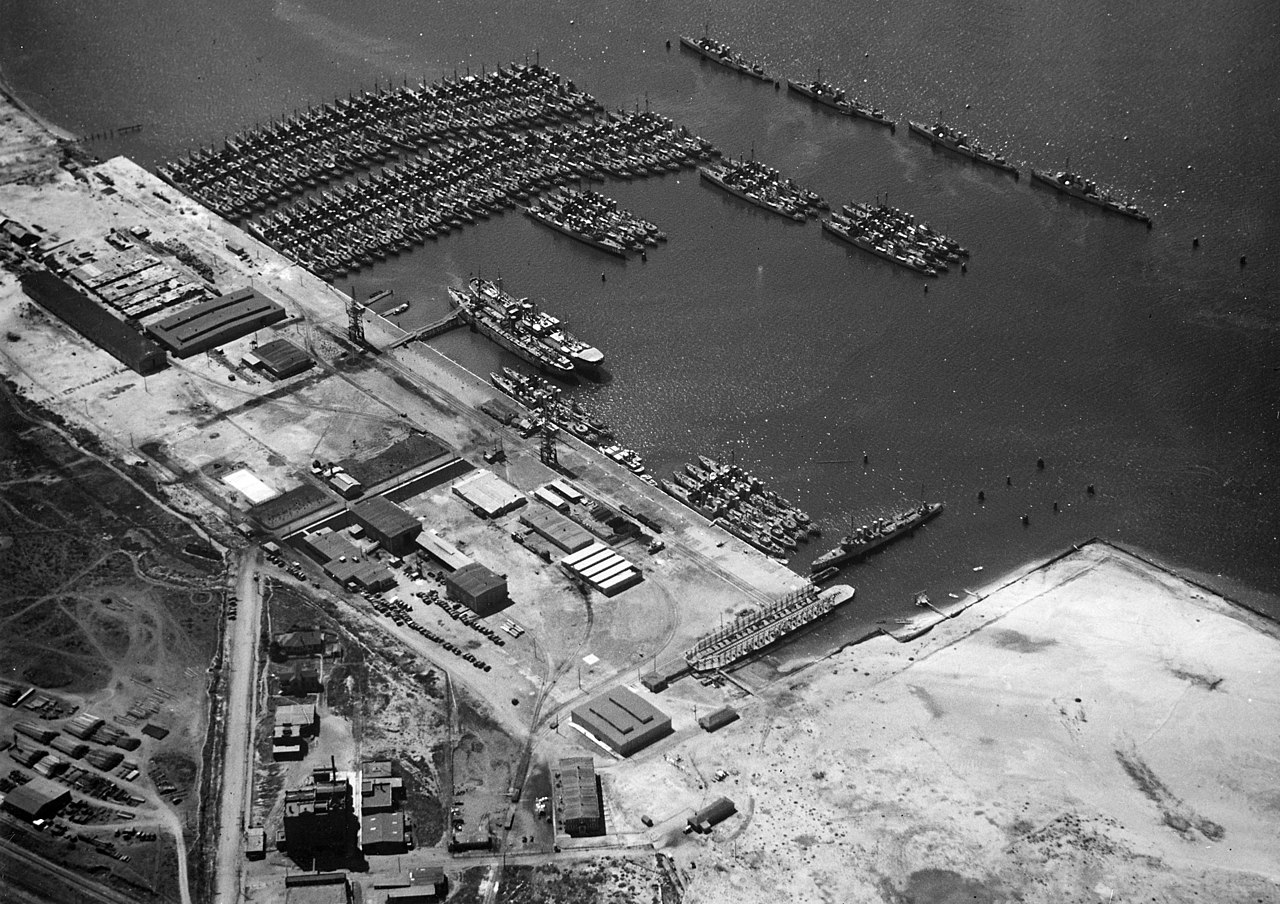The end of World War One found the United States Navy with many ships under construction but some distance from being completed. The Caldwell, Wickes and Clemson class destroyers were collectively known as the 'four pipers' for a reason that is obvious from their side views. There were hundreds of these units that had been laid down in late 1915 through to 1918 and the last of which were completed in 1920-21.
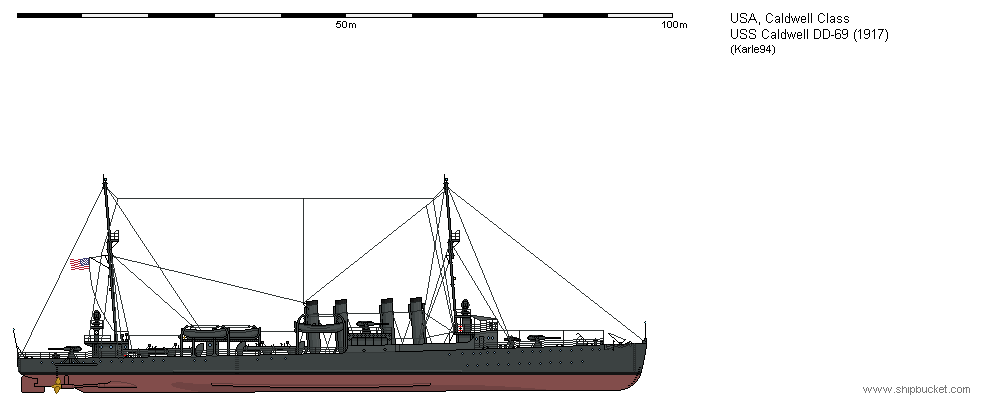
The US Navy must have had blimkers on with its Navy building decisions through to 1915. No Scouts - Light Cruisers were built since the Chesters of 1907. The only 'cruisers' built were the large armoured cruisers which had already been rendered obsolete before World War One started. The only class in which they could show up to date numbers and types were the Dreadnought battleships and battlecruisers. Even the destroyers built or building prior to WW1 were mainly coastal types and useless for Fleet screening for which the Royal Navy and German Navy had hundreds for.
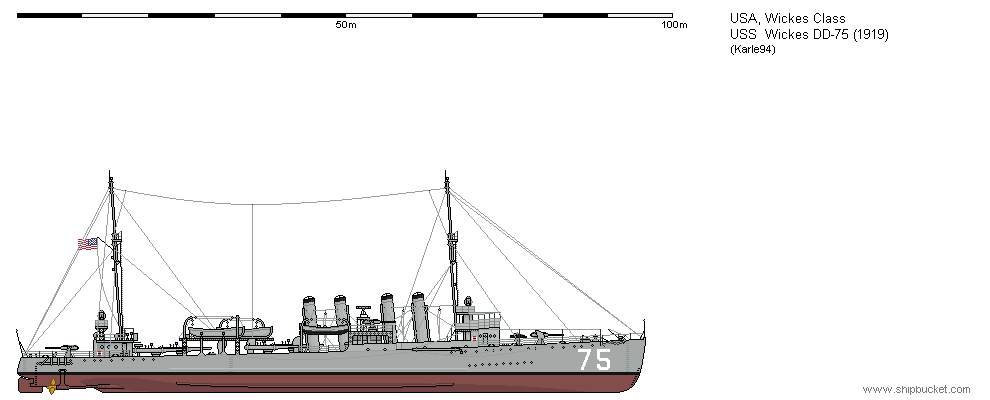
Crash building programs for destroyers and scout cruisers were implemented just prior to wars end, but were continued with as the shortage would still exist even after the war ended.
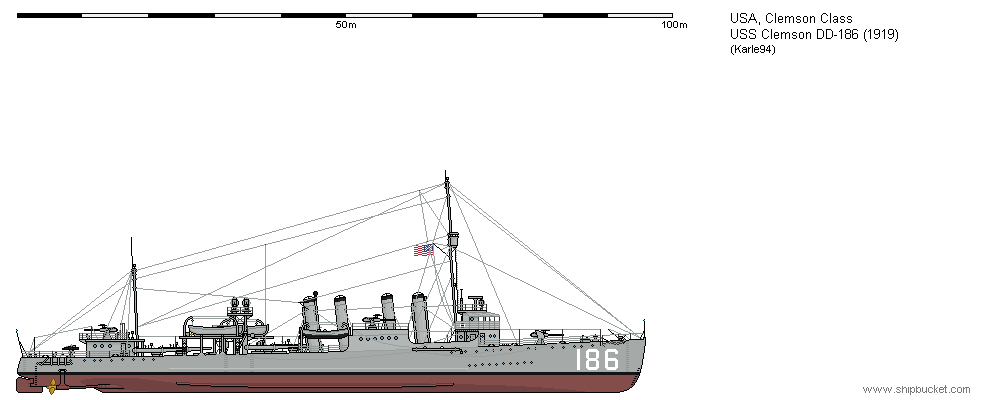
Natural attrition lowered the overall numbers from the 270 odd completed to just over 200 going into World War Two. One of the most famous inter-war battles was the Battle of Honda Point,
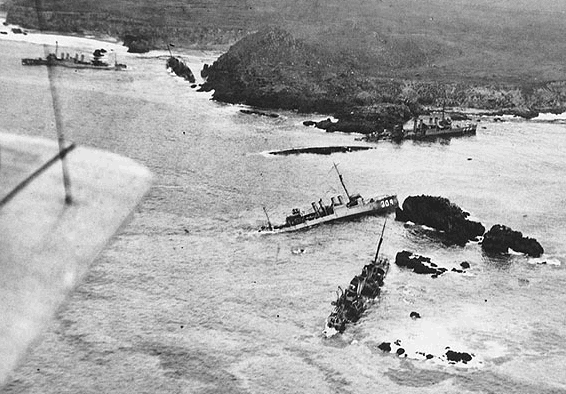
The Honda Point disaster was the largest peacetime loss of U.S. Navy ships. On the evening of September 8, 1923, seven destroyers (out of 12), while traveling at 20 knots (37 km/h), ran aground at Honda Point (also known as Point Pedernales; the cliffs just off-shore called Devil's Jaw), a few miles from the northern side of the Santa Barbara Channel off Point Arguello on the Gaviota Coast in Santa Barbara County, California. Two other ships grounded, but were able to maneuver free of the rocks. Twenty-three sailors died in the disaster. Navigational errors led to this disaster.

Many were converted early in the war to various secondary duties. Minelayers, escorts, fast transports. Above is he Reuben James as an escort. The Reuben James had just finished its upgrades and been put into the Neutrality Patrol force in the North Atlantic, when it was torpedoed by a German U-Boat. The US Navies first loss in WW2.
